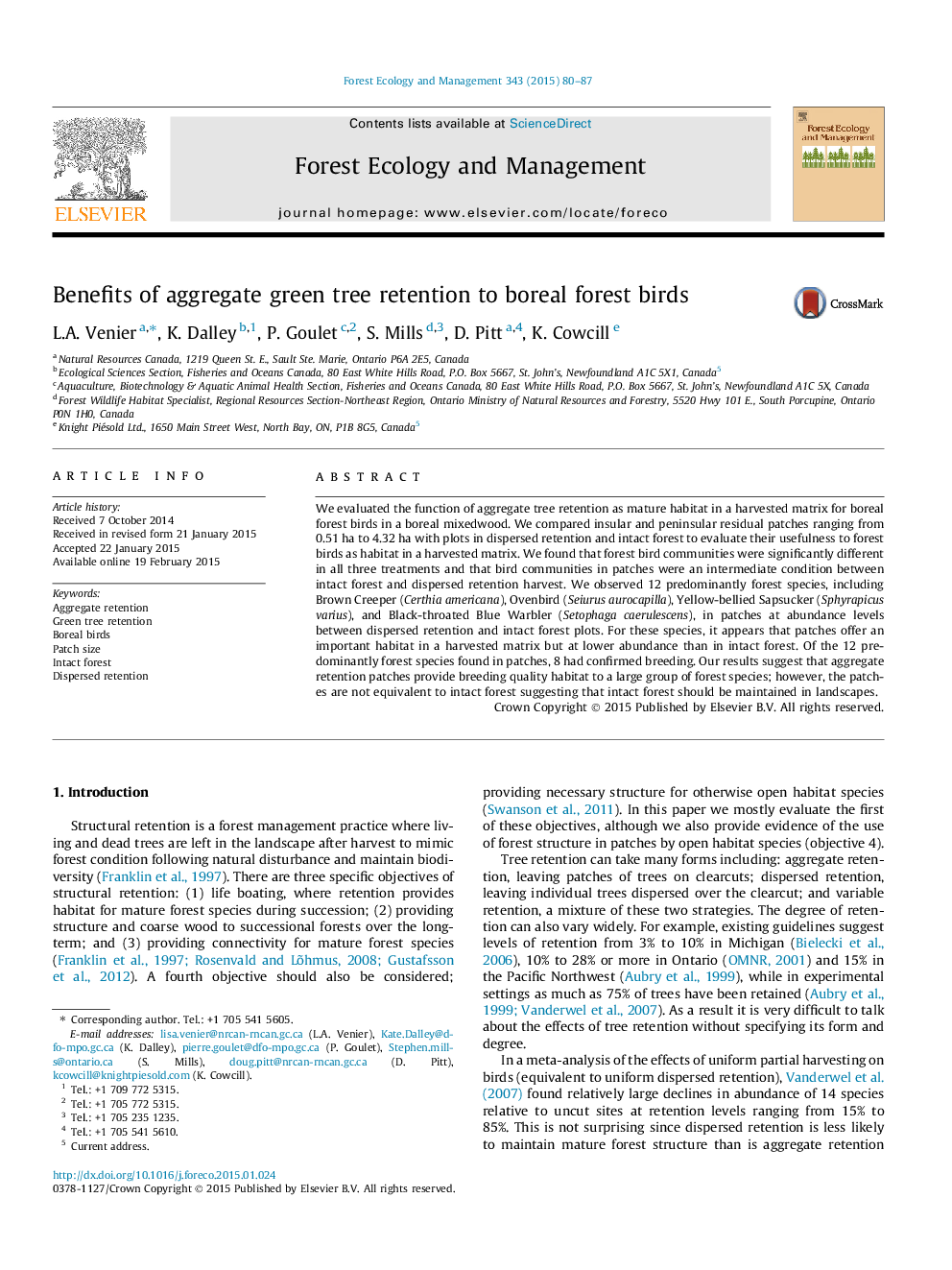| Article ID | Journal | Published Year | Pages | File Type |
|---|---|---|---|---|
| 86289 | Forest Ecology and Management | 2015 | 8 Pages |
•Bird communities in patches were intermediate to those in harvest and uncut blocks.•12 forest species observed in patches but at lower abundance than in uncut forest.•8 forest bird species with confirmed breeding in patches.•Aggregate retention provides breeding quality habitat to forest species.•Some species still likely require intact forest for maintenance.
We evaluated the function of aggregate tree retention as mature habitat in a harvested matrix for boreal forest birds in a boreal mixedwood. We compared insular and peninsular residual patches ranging from 0.51 ha to 4.32 ha with plots in dispersed retention and intact forest to evaluate their usefulness to forest birds as habitat in a harvested matrix. We found that forest bird communities were significantly different in all three treatments and that bird communities in patches were an intermediate condition between intact forest and dispersed retention harvest. We observed 12 predominantly forest species, including Brown Creeper (Certhia americana), Ovenbird (Seiurus aurocapilla), Yellow-bellied Sapsucker (Sphyrapicus varius), and Black-throated Blue Warbler (Setophaga caerulescens), in patches at abundance levels between dispersed retention and intact forest plots. For these species, it appears that patches offer an important habitat in a harvested matrix but at lower abundance than in intact forest. Of the 12 predominantly forest species found in patches, 8 had confirmed breeding. Our results suggest that aggregate retention patches provide breeding quality habitat to a large group of forest species; however, the patches are not equivalent to intact forest suggesting that intact forest should be maintained in landscapes.
